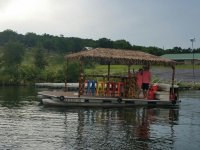Hi guys,
First post ever! Struggling with a 1990 70hp outboard. I bought it 15 years ago and it has always been reliably unreliable. I had a marine mechanic rebuild all carbs. It ran ok but still had the following issue:
When I first start it cold, I can put it in gear and smoothly add power and it will accelerate nicely. But after it is warmed up, and I kill it then start it again, (like when I drive to the marina to get gas) it starts fine, but when I put it in gear and add throttle, it will bog and die unless I simultaneously push the key in (primer solenoid). I recently replaced fuel pump, fuel tank, fuel line, bulb primer, and changed plugs. Now the problem seems to be getting worse. My first thought is carbs given that after changing fuel pump it got worse - clogged float jet? Given that when I push the key in, it will save it from dying, the primer solenoid sounds like it is working ok?
I would like my wife and son to be able to drive this reliably but as it stands, I am the only person who can keep it running. I guess on a positive note, nobody's can steal it! BTW - I converted it to a tiki bar. Pics attached. Enjoy!
First post ever! Struggling with a 1990 70hp outboard. I bought it 15 years ago and it has always been reliably unreliable. I had a marine mechanic rebuild all carbs. It ran ok but still had the following issue:
When I first start it cold, I can put it in gear and smoothly add power and it will accelerate nicely. But after it is warmed up, and I kill it then start it again, (like when I drive to the marina to get gas) it starts fine, but when I put it in gear and add throttle, it will bog and die unless I simultaneously push the key in (primer solenoid). I recently replaced fuel pump, fuel tank, fuel line, bulb primer, and changed plugs. Now the problem seems to be getting worse. My first thought is carbs given that after changing fuel pump it got worse - clogged float jet? Given that when I push the key in, it will save it from dying, the primer solenoid sounds like it is working ok?
I would like my wife and son to be able to drive this reliably but as it stands, I am the only person who can keep it running. I guess on a positive note, nobody's can steal it! BTW - I converted it to a tiki bar. Pics attached. Enjoy!



